TAKEAWAY: It seems to be a pattern—and not a very good one: whenever newspapers need to cut personnel, the knife targets visual journalists. But, does it make sense?
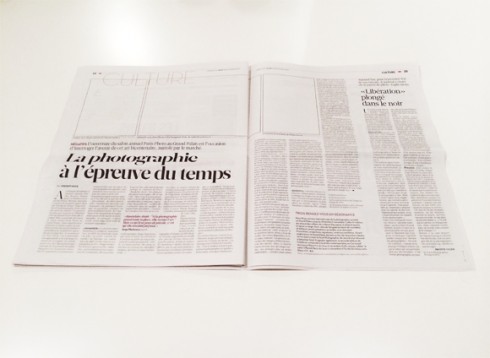
The French newspaper Libération removed all images from its November 14 to show the power and importance of photography at a time when the industry’s woes force publishers to make cuts, which usually start with photographers and visual journalists.
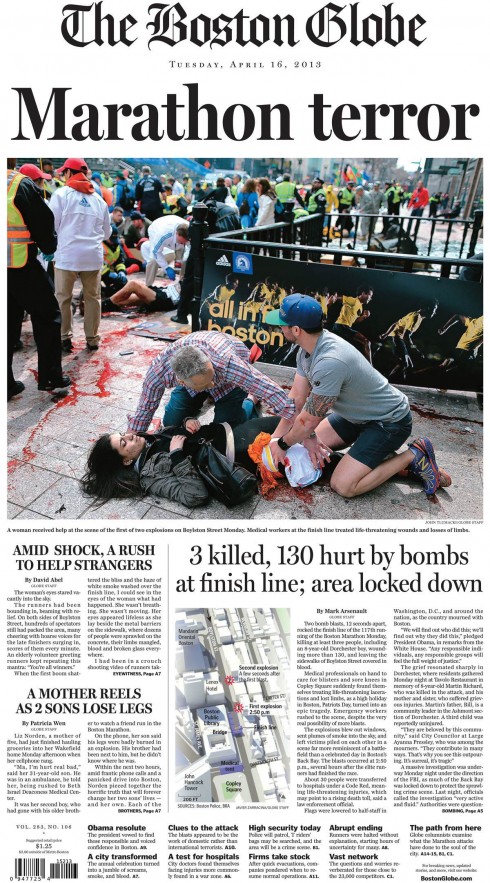
Front page of Boston Globe, with image from photographer, John Tlumacki, who recorded the Boston Marathon bombing (https://nppa.org/node/60892), sharing his images of carnage with readers around the world
The numbers tell the story: in the past five years, the number of visual journalists eliminated from many newsrooms has increased. It dwarfs the number of other journalists whose jobs are considered a surplus.
But even the use of the word “surplus” seems to be so badly used .
No one questions the value of what visual journalists do. The work of designers, photographers, illustrators and info graphic artists is indispensable to enhance content. It is no secret that most of us enter a newspaper or magazine page (or the screen, for that matter) via a visual. It is that photo, illustration or video that first seduces us into reading the content.
Every single Poynter EyeTrack research in which I have participated has yielded similar results: it is the image that becomes the first point of entry.
So, why should photographers, especially, bear the brunt of job cuts?
Jim Michalowski, a visual journalist, editor and treasurer of the National Press Photographers Association, sees it this way:
“There’s a difference between a reporter or writer and a photojournalist – yes, it’s true, practically anyone can use an iPhone to make an image, but professionally trained visual journalists look at situations differently, seeking nuances that non-visual individuals may not notice, or even look for, that tell the story better than just a snapshot. Readers value exceptional visuals and radical elimination of entire photography staffs such as Chicago’s Sun-Times are not ignored – subscribers do notice the devalued product.
At this year’s Boston Marathon bombings: while spectators may have run away from the tragedy it was experienced visual journalists like Boston Globe photographer, John Tlumacki, who recorded the tragic incident (https://nppa.org/node/60892), sharing his images of carnage with readers around the world.
Where visual journalists are hired
There are some good news, too, in the midst of this gloomy scenario.
At the Orange County Register, visual journalists have been hired as part of the publishers’ plan to revitalize that newspaper, enhance local coverage and raise the level of visual storytelling.
At the OCR hiring is on for visual journalists and the number prove it: In the last year, the graphics department grew from two to eight. And, in design, the OCR increased its staff from seven to 16. And the regional papers, which had no designers, now have 19.
Jeff Goertzen is one of those visual journalists who were recruited by the OCR, a newsroom many believe is among the most progressive in the United States in terms of its approach to doing print happily. Here is what he tells me:
When The Register started restocking its newsroom, many of the hires were graphics artists and designers. Photography still had solid staffing, but the overall visual content of The Register needed a rebirth.
The hires go hand in hand with the increase in the number of pages devoted to visual storytelling, says Jeff.
Since CEO and publisher, Aaron Kushner arrived, here’s what has happened at The Register: In photography, before, T**he Register’s** OC Varsity section ran only once a week. Now we run it three days a week year around. Each page has about 10 photos covering more than 40 games a week. This trend extends to our 25 regional papers as well, which have all been redesigned to full broad sheet. In September alone, we photographed 656 high school sports games and published 2,201 photos in OC Varsity and our regional papers. We also have 15 new special sections, which showcase strong visuals on the covers and inside.
In graphics, in the last year, the graphics department grew from two to eight. And we went right to work. In that time period, we’ve published nearly 40 full-page graphics and 5 double truck graphics. We’ve published more than 20 center piece graphics on our 1A and roughly 10 centerpiece illustrations on our 1A as well.
We also have three Focus pages that run daily. These pages, which are researched, written and designed by Focus page editor Charles Apple and wire desk chief Gene Harbrecht, also showcase full-page graphics and strong photography to tell the story on a daily basis.
Jeff also mentions that with all this visual content pouring into the The Register’s pages, one can’t undermine the importance of having journalistically-savvy designers who know how to package visually-driven content with good reporting.
(See various examples of The Register’s visual storytellers’ output here).
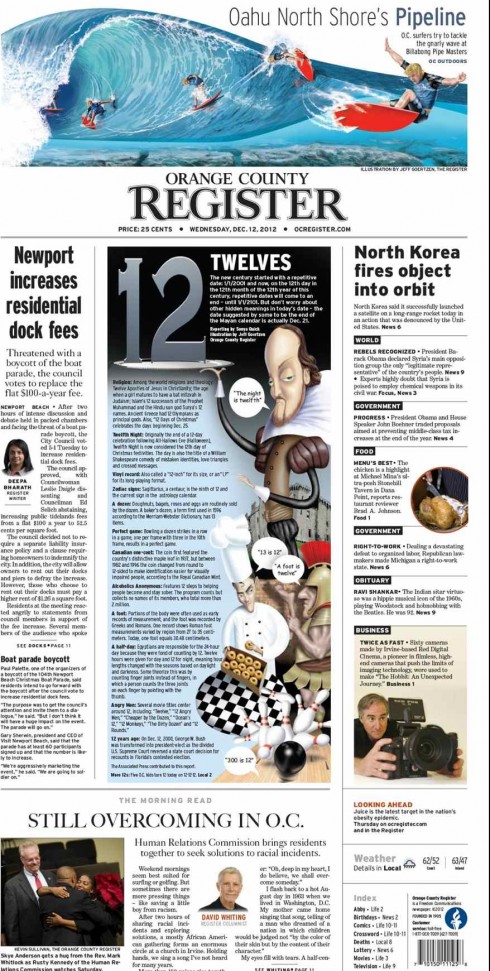
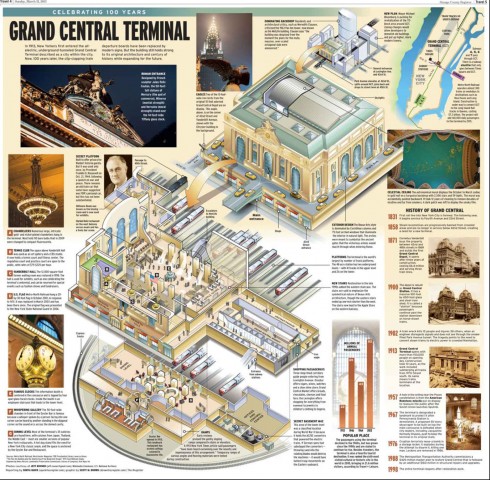

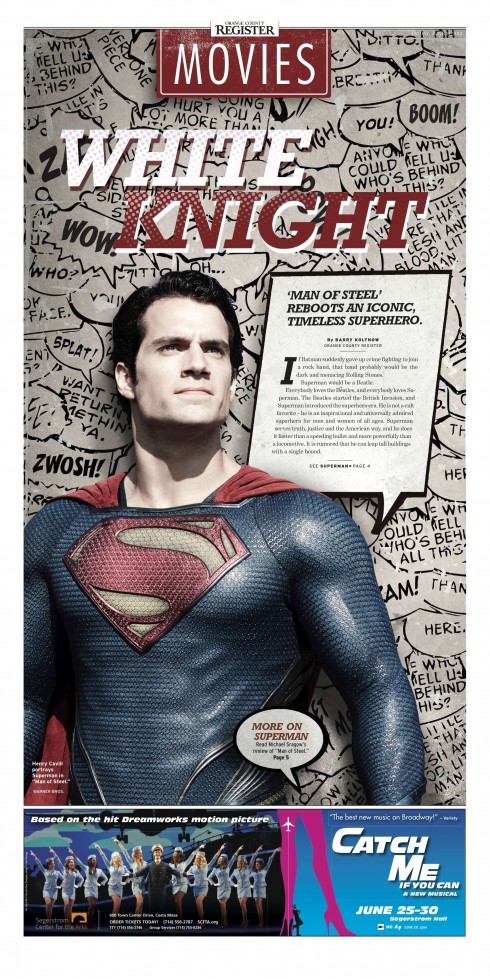

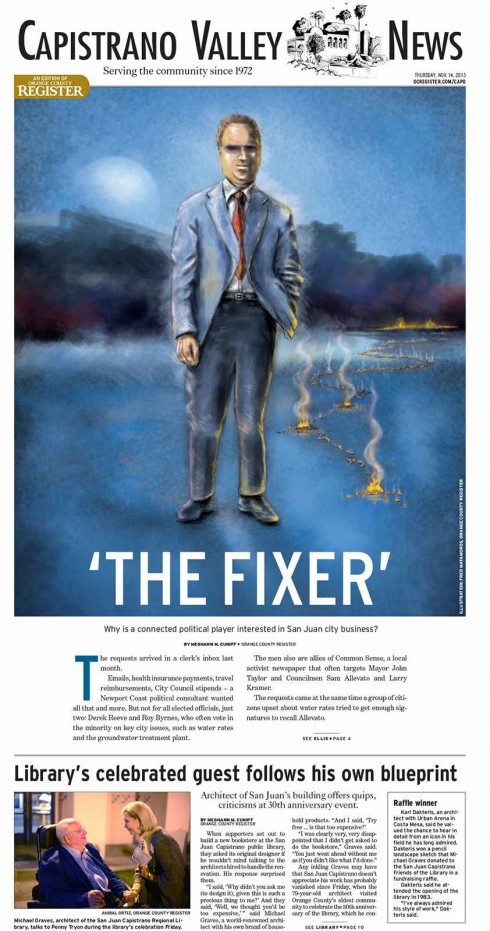
Visual journalists and multimedia storytelling
Furthermore, as multimedia storytelling becomes more popular and necessary as part of how we cover stories, the need increases for the work of visual journalists. In fact, the creation of a multimedia story package begins with a story, a writer and a visual journalist.
This is why it seems so ironic to me that visual journalists be targeted as the first groups where cuts can be made.
Time to rethink those strategies. Time also to assess the value of the work visual journalists do at a time when the demand for their talents and skills increases as we move into more sophisticated and visual storytelling techniques.
National Press Photographers Association
The National Press Photographers Association provides visual journalists accelerated training in multimedia, news video and advanced storytelling to elevate the impact of visual journalism in print, on-line, mobile and broadcast. For more information:
https://nppa.org/training
Of related interest:
Visual jobs in newsrooms have fallen by nearly half since 2000
http://www.poynter.org/latest-news/mediawire/229302/visual-jobs-in-newsrooms-have-fallen-by-nearly-half-since-2000/
At newspapers photographers feel the brunt of job cuts
http://www.pewresearch.org/fact-tank/2013/11/11/at-newspapers-photographers-feel-the-brunt-of-job-cuts/
http://news.syr.edu/newhouse-alexia-foundation-to-hold-pan-am-103-commemorative-event-43224/
French newspaper removes all images in support of photographers
http://www.bjp-online.com/british-journal-of-photography/news/2307127/french-newspaper-removes-all-images-in-support-of-photographers
About Jim Michalowski
http://www.jamesmichalowski.com/about/